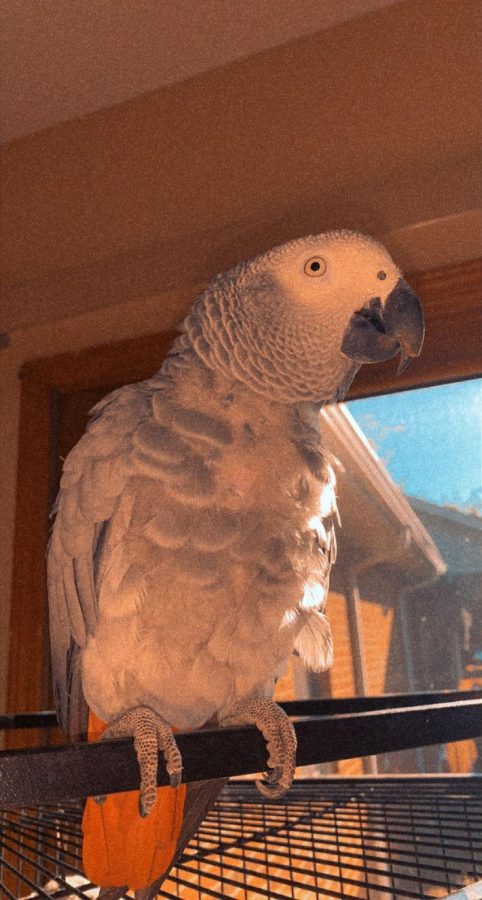The Joy of Parrots
October 8, 2021
Owning a parrot is a true delight. A soft, feathery, and talkative companion to keep you company everyday is a joy. Especially African Grey parrots, which are among the most intelligent breed of parrots.
Taking Responsibility
African Grey parrots are very high maintenance animals that require constant cleaning, interaction, and flying. They need several hours of interaction each day. Adopting an African Grey is a life long commitment because they live to be up to 80 years old. If you can’t take care of your parrot after giving it a chance, you should consider asking a family member before taking the parrot to a bird rescue so they aren’t neglected in captivity.
Keeping your parrot healthy is a very important thing, and chopped vegetables with parrot seed mix and plenty of fresh water everyday is a good diet for them. Although you may think avocados are healthy, it can be fatal to a parrot. Parrots can’t have any avocado, dairy, raw meat; chocolate or cocoa, onions, garlic, salt, fat, mushrooms, apple seeds, or caffeine.
Bathing your parrot is important. African Grey parrots are dusty and dry, so they need a shower at least once every week or every two weeks. Consider getting a misting spray bottle with warm water and spraying them in the bathtub or shower on a perch. They should enjoy it and flap their wings, which you can reward with a treat. If your parrot shows signs of fear or anger, stop and get a small dish of water and place it in the bottom of their cage so they can bathe on their own. Keep the room their cage is in at a warm temperature while their feathers are drying.
African Grey parrots need to remain in a constant 70 degree habitat, never getting any colder than 65 degrees. Moving their cage during the day to sit by a big window that allows sunlight in is a good choice. If they’re kept below 65 degrees it can affect their immune system negatively. When your parrot goes to sleep at night they need to have a warm room and a thin sheet to cover their cage so they can sleep unbothered. Greys need about 10-12 hours of sleep because they only rest half of their brain at a time.
Male and Female Parrots
Male parrots are somewhat bigger and rounder with shorter necks. Their grey color also is darker, and as they age their grey becomes darker as well as their stunning scarlet tail. Female Greys are slightly more slender with a longer neck. Their grey color and scarlet red tail are lighter compared to the male because the males have to attract the female Greys. The female Greys lay eggs even without a mate, and they usually lay their unfertilized eggs 1-2 times a year. Since the females will sit on their eggs until they hatch, the unfertilized eggs can be taken away from the parrot after 18 days to a month after.
Different Types
There are two different types of African Greys. There is the large Congo African grey, with a bright red tail, and the smaller, darker grey-colored Timneh African grey, with a maroon-colored tail. There is only a slight difference between the two but the Congo is bigger, less likely to bond with secondary and additional family members, and is considered better for the experienced owner. The Timneh is smaller, more confident, and will start talking from a younger age, and he is widely considered a good breed for novice African Grey owners.
Being a Grey Owner
I have a 14 year old Congo African Grey! Her name is Burpy. I got Burpy from a family member this past February. It took a while for her to adjust to her new environment and new home. She has laid 12 eggs since we’ve gotten her and we have had to take them from her after she sat on them for over a month. This past summer my parents and I have gotten a lot of time to bond and learn about our parrot. It is definitely a challenge taking care of her, but it becomes a routine and it really pays off. She’s a joy to have.
If you are interested in adopting an African Grey, contact a local parrot rescue or shelter. It is a good choice to adopt animals who need saved.



